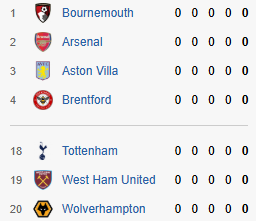LiveTV: A New Era of Sports Watching
1. Introduction
Sports have always held a special place in global culture, bringing communities together and amplifying human drama to epic proportions. For decades, these moments of triumph and heartbreak were captured primarily via television broadcasts, making major networks the gatekeepers of live sports. Today, however, we live in a new era—one defined by live sports streaming. Digital platforms have loosened the monopoly that traditional TV once held, granting fans unprecedented access to games and competitions from across the globe.
Increasingly, viewers prefer to watch their favorite sports on smartphones, tablets, and smart TVs. They also crave customization, from selecting preferred camera angles to accessing real-time stats, polling, and interactive features—all in a single, seamless interface. This shift is not just technological; it’s cultural. The so-called “digital native” generations expect immediacy, personalization, and the ability to share the viewing experience with others online. As a result, the landscape of live sports broadcasting is undergoing a swift and transformative evolution.
2. The Consumer Revolution: The Rise of On-Demand Culture
2.1 A Shift in Viewing Habits
One of the defining features of the 21st century is the rise of on-demand culture. Whether it’s music streaming, binge-watching TV series, or ordering food delivery at midnight, consumers want immediate access to services and products. Live sports are no exception. Gone are the days when fans would organize their schedules around a single broadcast; instead, they expect the event to be available wherever and whenever they’re ready to watch.
For many enthusiasts, the thrill of live sports is best experienced in real time, but even then, the ability to pause, rewind, or watch condensed highlights at one’s convenience has become an integral part of the modern fan’s routine. This flexible viewing experience caters perfectly to busy schedules and global audiences, where a game might air in the middle of the night due to time-zone differences.
2.2 Multiple Platforms, One Goal
With these changing consumer habits, sports leagues and broadcasters are racing to adapt. Now, it’s not unusual to see multiple platforms carrying the same event, each offering a slightly different package. For instance, one might focus on behind-the-scenes content and in-studio analysis, while another prioritizes immersive camera angles or instant post-game highlights. These options cater to a diverse audience—some fans value personality-driven commentary, while others want strictly stats-based reporting.
Such coexistence of traditional TV networks and streaming services reflects the broader industry’s willingness to experiment with innovative broadcasting formats. The outcome is a more personalized experience for viewers, as they have greater flexibility in how they consume live sports.
3. The Underrepresented Sports: Bridging the Gap
3.1 From Niche to Mainstream
One of the most transformative aspects of live sports streaming is how it provides exposure to underrepresented sports. In the days of traditional television, airtime was expensive, and only the most popular leagues—like the NFL, NBA, Premier League, or Olympic events—could reliably secure nationwide or international broadcast slots. Smaller or emerging sports faced a steep uphill battle to gain media attention.
Digital streaming changes that dynamic. Platforms can host a wide range of live events without the same constraints of limited bandwidth or scheduled programming blocks. As a result, niche sports—whether it’s Ultimate Frisbee, women’s rugby, or professional surfing—have discovered a global audience eager for something different from the usual mainstream offerings.
3.2 Cultivating Unique Fan Communities
Enthusiasts of underrepresented sports tend to be incredibly passionate. With streaming, these fans are no longer isolated. They form digital communities across social media and specialized online forums, discussing strategies, celebrating wins, and sometimes even organizing local tournaments inspired by what they’ve watched online.
Streaming also allows these sports to secure new sponsorships, as brands recognize the potential to reach highly engaged niche communities. With fewer sports leagues dominating the spotlight, smaller organizations can cultivate a loyal following and monetize their content through sponsorship deals, merchandise sales, or pay-per-view events. Over time, some of these sports evolve from niche pursuits to genuine contenders in the broader sports market—largely thanks to the visibility afforded by streaming platforms.
4. The Synergy of Data and Analytics: Personalizing the Experience
4.1 Beyond the Box Score
In the realm of live sports streaming, data is king. Modern viewers aren’t content with just watching a match; they want deeper insights into player performance, team strategies, and key moments. Sports streaming services leverage advanced analytics tools to offer real-time statistics—everything from an athlete’s top running speed to the probability of a comeback late in the game.
Such data-driven features not only enrich the viewing experience for hardcore fans, they also appeal to casual watchers who might become more invested if they can see the tactics behind the play. Comprehensive, on-screen analytics can break down the complexities of a sport, making it more accessible and engaging for newcomers.
4.2 Machine Learning and Tailored Recommendations
Another technological breakthrough is the use of machine learning algorithms to personalize content. Just as streaming services like Netflix or Spotify tailor their recommendations, sports platforms offer curated feeds based on a user’s favorite teams, leagues, or athletes. If a viewer frequently watches soccer, they might be served real-time notifications for breaking news in the world of football or recommended highlight reels from other leagues featuring similar styles of play.
Additionally, AI-driven systems can detect a user’s most-watched moments, like a particular type of play or even a certain commentator’s style, and then surface more content along those lines. This level of personalization turns passive viewers into active participants, strengthening their overall loyalty to the platform.
5. Evolving Monetization Strategies: Microtransactions, Sponsorships, and Crypto
5.1 Free vs. Premium Access
As with any form of digital entertainment, monetization is a key concern for sports streaming. While subscription models remain the backbone—monthly or yearly fees granting access to all available sports content—platforms are also experimenting with microtransactions. For instance, fans could pay a small fee for a single match or subscribe to a short-term pass for a particular tournament. This approach caters to viewers who only care about specific events or who don’t want a long-term subscription.
At the same time, freemium models (where basic content is free but premium features come at a cost) are gaining traction. Viewers might watch live games for free but pay extra to remove ads, access 4K streams, or unlock multi-angle replays. This tiered model allows platforms to attract a broad user base, converting casual viewers into paying customers over time.
5.2 Sponsorships and Brand Collaborations
Traditional sports broadcasting has always relied on advertising revenue. Streaming takes this model into new territory by facilitating targeted ads based on user demographics and behavior. Furthermore, brand collaborations can be woven seamlessly into the content. For instance, a sports analytics company might sponsor a segment that analyzes game-changing plays with real-time data, or a travel brand could sponsor a “Road to the Championship” feature highlighting the host cities.
Compared to television, streaming platforms can collect more detailed data about viewer engagement, location, and preferences, which makes sponsorships more appealing to advertisers who want a measurable return on investment. As a result, brand collaborations become more nuanced, offering advertisers creative avenues to connect with highly specific audiences.
5.3 The Emergence of Crypto and NFTs
With the growing popularity of cryptocurrencies and NFTs (non-fungible tokens), sports streaming platforms and leagues have started to explore their potential as new revenue streams. Imagine fans buying limited-edition digital collectibles—a record-breaking home run, a decisive goal, or a legendary slam dunk—that are minted as NFTs. These assets can be traded or showcased, adding a new layer of interaction for collectors and superfans alike.
Crypto-based betting platforms have also emerged, where fans can wager on live games or future outcomes using digital currencies. While regulatory issues vary by region, such integrations reflect how sports streaming isn’t just about passive consumption; it’s about intertwining technology, finance, and entertainment into one dynamic ecosystem.
6. Regional Markets: Growth Potential and Cultural Nuances
6.1 Asia’s Boom and Africa’s Underserved Regions
In terms of sheer numbers, Asia presents an enormous growth opportunity for live sports streaming. Countries like India, China, and Indonesia boast massive populations with a rapidly expanding middle class, which means millions of potential viewers for streaming platforms. Cricket, for example, enjoys staggering popularity in South Asia, leading both established and emerging services to scramble for exclusive streaming rights to major tournaments like the Indian Premier League (IPL).
Meanwhile, Africa represents a frontier market where many countries leapfrog traditional cable infrastructure in favor of mobile-based streaming. As smartphones become more affordable, sports streaming could see exponential growth. However, data costs and inconsistent internet speeds pose ongoing challenges. Platforms that adapt to local conditions—offering lightweight video options or offline viewing—stand a better chance of success in these regions.
6.2 Localization and Cultural Adaptation
When expanding into new territories, sports streaming platforms must consider localization. It’s not enough to merely offer a feed in the local language; cultural nuances like preferred commentators, time-zone adjustments, and even local sponsorships can make or break a platform’s success. For instance, a soccer league looking to break into East Asia might invest in well-known regional celebrities as brand ambassadors, or create content that highlights cultural connections to the sport.
This attention to cultural detail can turn casual viewers into loyal fans who feel that the platform respects and understands their region’s unique identity. Conversely, neglecting such nuances can lead to a lukewarm reception, even if the core product—live sports streaming—is well-designed.
7. The Future of Interactive Broadcasting
Looking ahead, the evolution of live sports streaming is set to continue at a rapid pace. Immersive technologies like virtual reality (VR) and augmented reality (AR) could one day allow fans to watch games from any vantage point in the stadium or overlay real-time stats on their living room walls. Broadcasters are already experimenting with 360-degree cameras, interactive polls, and AI-driven commentary that can adapt to each viewer’s preferences.
We could also see a deeper integration of social platforms. Instead of using a second screen to discuss the match on Twitter or Discord, viewers might have access to built-in chat rooms or watch parties within the streaming service itself. This convergence between streaming and social networking elevates the communal aspect of sports—people want to cheer, argue, and celebrate together, even if they’re physically miles apart.
Ultimately, interactive broadcasting is poised to transform passive spectators into active participants. Whether it’s live polling to influence camera angles, microbetting on play outcomes, or turning highlight clips into tradable NFTs, the future of sports streaming is one where fans can shape their own experiences in real time.
8. Conclusion: A Global Playing Field
The ongoing revolution in LiveTV – Live Sports Streaming showcases how technology can break down barriers, empower fans with choices, and bring underrepresented sports into the mainstream. It also poses new challenges—licensing, infrastructure, and monetization strategies must evolve to keep pace with shifting viewer expectations and cultural trends.
Yet, the opportunities are immense. As platforms refine their user experiences and venture into untapped markets, fans across the world gain easier access to the sports they love. Innovations in data analytics, immersive viewing, and community-building features promise to make sports more interactive and inclusive than ever before.
In this global playing field, everyone—whether a casual follower, a die-hard devotee, or an emerging sports organization—stands to benefit. Live sports streaming isn’t just about convenience; it’s about reimagining how we connect with the games, players, and leagues that capture our collective imagination. And while the final score might still be decided on the field, the future of sports broadcasting will be shaped by the new frontiers of technology, engagement, and worldwide accessibility.























